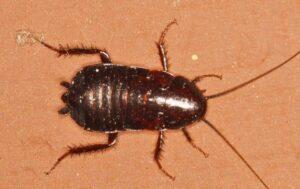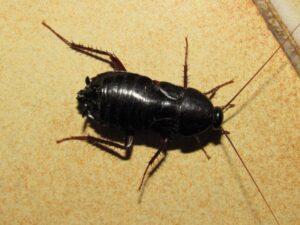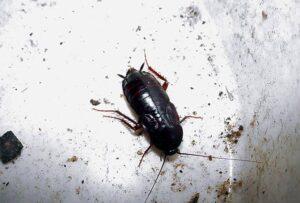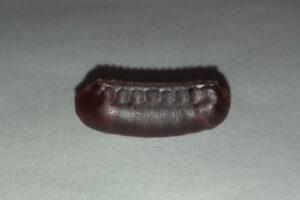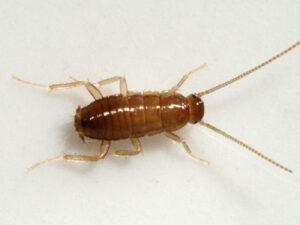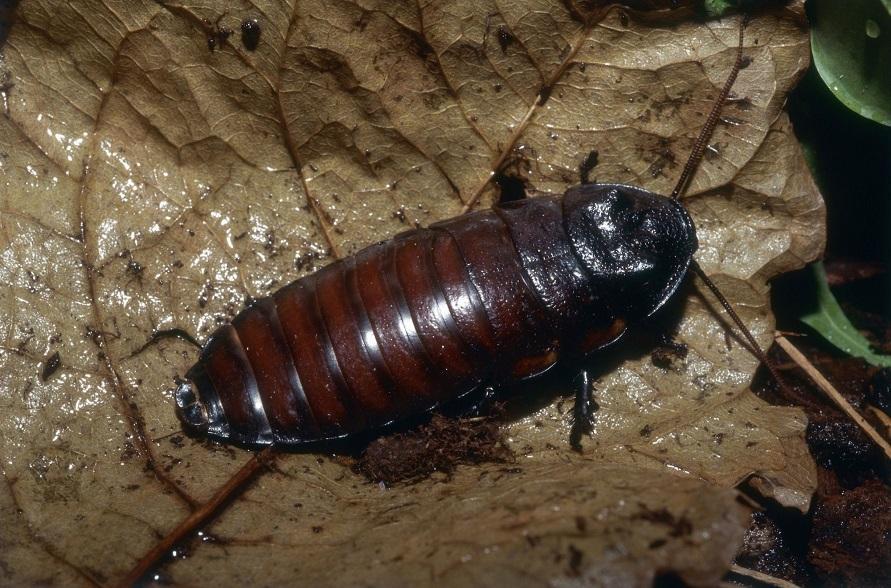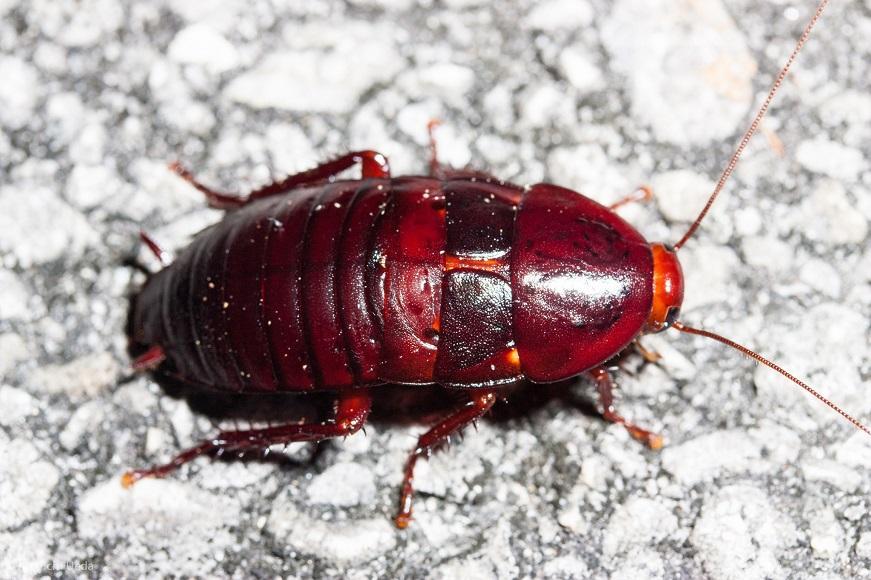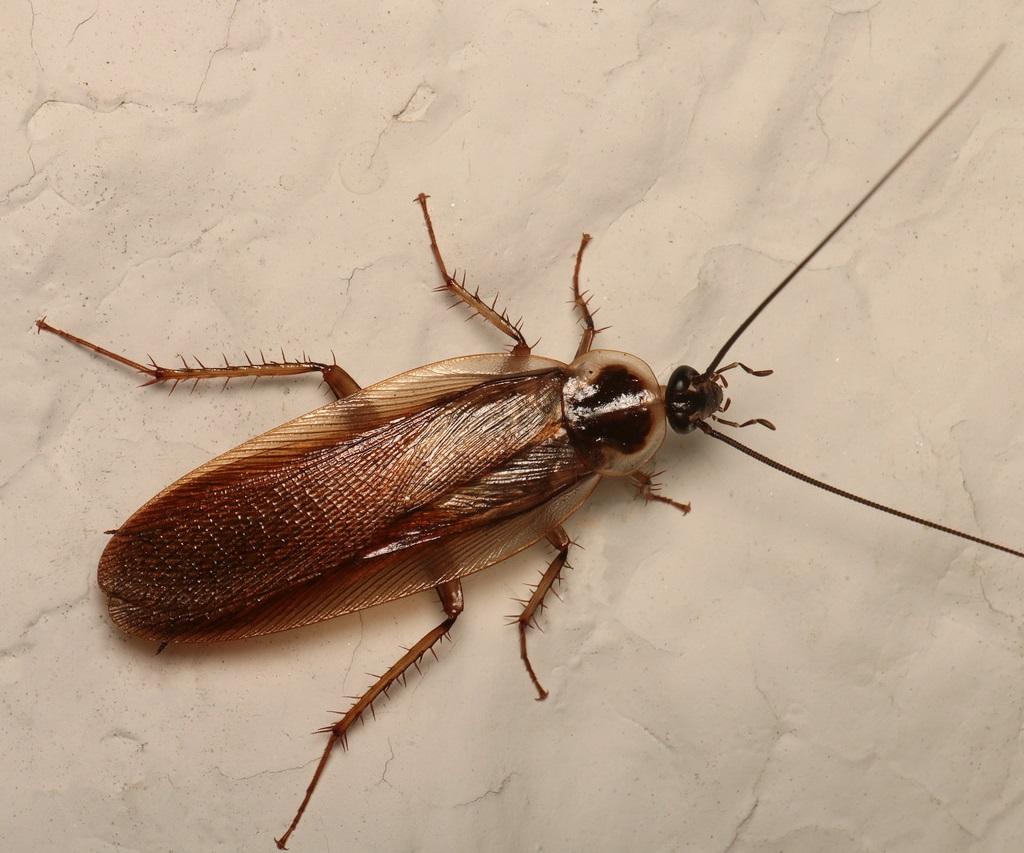Oriental Cockroach (Blatta orientalis)
Updated on
11/01/2023The oriental cockroach of the Blatta genus was initially endemic to the area surrounding the Caspian Sea, Black Sea, and the Crimean Peninsula. However, at present, it has a worldwide distribution. It has eventually emerged as an annoying pest, getting rid of which is immensely difficult than most other roaches. Since one could mostly find them in damp areas, this roach is also called the waterbug.
Scientific Classification
- Class:Insecta
- Order:Blattodea
- Family:Blattidae
- Genus:Blatta
- Species:B. orientalis
Conservation Status
Description and Identification
These cockroaches display sexual dimorphism in size and physical features. The males appear larger, with a length of 0.71 to 1.14 inches (18 to 29 mm). The females are smaller, measuring 0.79 to 1.06 inches. The overall coloration of both sexes varies from black to brown; their bodies also have a glossy texture. This has also resulted in their other alternate name, black beetle or black cockroach.
One could also easily distinguish a male from a female through their wings. The males have a narrow body and long wings covering about 3/4th of their abdomen. The females don’t have wings but pads that give the impression of tiny wings. The male roaches have a slender, narrow bodies than their female counterparts, which appear wider, resembling the Florida woods cockroach.
Distribution: Distributed globally, occupying parts of Europe, Australia, North America, and South America
Habitat: Outdoors – Under bushes, leaves, firewood, debris, and stones, as well as drains and sewers; Indoors – In garages, porches, damp basements, under sinks, near garbage cans, in toilets
Do They Bite/Sting: Yes; they can bite, but do so rarely to people
Lifespan: 35 – 90 days
Predators: Spiders, beetles
Behavior and Characteristics
Diet
These voracious eaters feed on anything and everything, with garbage and decaying organic matter on top of the list.
Flight
The males have wings. However, the females do not, yet both male and female oriental cockroaches cannot fly.
Life Cycle
1. Egg Stage
The eggs, 0.39 – 0.47 inches long, are housed in the compartments of the egg cases or ootheca, 16-18 of them together. The females carry the egg capsules for a duration as short as twelve hours or as long as five days. She then puts it in a warm place where food is readily available. These eggs, too, attain the similar blackish-brown coloration seen in the adult cockroaches in the final stage. However, before turning blackish-brown, they undergo two color changes, first appearing yellowish-white and then reddish.
2. Nymph Stage
The baby cockroaches don’t have wings, as seen in their adult counterparts. They go through about seven to ten molts before maturing into adult oriental cockroaches. The nymphal stage lasts for anywhere between 24 and 130 weeks.
3. Adult Stage
The development cycle of the oriental cockroach is seasonal. One could mainly spot adults in the late spring – early summer phase. However, their numbers eventually lessen in the latter half of summer or early fall.
Comparison with Similar Species
| American Cockroach | Oriental Cockroach | German Cockroach | |
|---|---|---|---|
| Size | Biggest; 1.1 to 2.1 inches (29 to 53 mm) | Comparatively smaller; 0.71 to 1.14 inches (18 to 29 mm) | Smallest of the three; 0.51 to 0.63 inches (13 to 16 mm) |
| Appearance | Reddish-brown with the head and thorax outlined in yellow | Shiny, with a reddish-brown or black body | Have a similar reddish-brown or black coloration but lacks the shine |
| Lifespan | The longest of the three; around 400 days | 35- – 90 days | 150 – 210 days |
| Ability to fly | Yes; for short distances | Despite wings in males they can’t fly | Both sexes have wings but rarely fly |
Are Oriental Cockroaches Dangerous
Since these cockroaches mostly remain in or near water sources, they inhabit all those places contaminated with bacteria and viruses. They carry these germs using their legs, dropping them on dishes, foods, countertops, and everywhere else they infest. When one ingests the infected food, they could contract dysentery from food poisoning alongside allergic reactions.
Getting Rid of Them
One of the signs of their infestation is the foul and musty smell emitted by these cockroaches to communicate and send out signals to their fellow roaches. The reddish or dark brown egg capsules around your home also indicate their presence. Keeping your house clean is a mandate to get rid of them or avoid their infestation altogether. Seal cracks or crevices in the wall or other areas, as that is one of the most favorable places through which they may gain entry into your home. Keep the indoors and outdoors clean and dry, as wet places are their most preferred habitat.
Spraying insecticides is an option but not a permanent solution as though it could help kill roaches, yet new nymphs would hatch in around two months. In the case of increased infestation, where controlling their population seems a mammoth task, calling for a professional exterminator would be feasible.
FAQs
They are attracted to damp habitats with decayed vegetation or organic matter.
Oriental cockroaches are called water bugs due to their preference for water sources. However, water bugs, on the whole, aren’t always similar to oriental cockroaches. They seem much more dangerous than the latter, capable of inflicting painful bites on humans, something quite unlikely of the oriental cockroach.
Unlike most other cockroaches, the oriental cockroach cannot climb ceilings and walls, preferring to dwell on the floor. Their feet lack the specialized pads required for climbing.
Source
branchcms.com, biodiversidade.eu, ukrbin.com, nathistoc.bio.uci.edu




